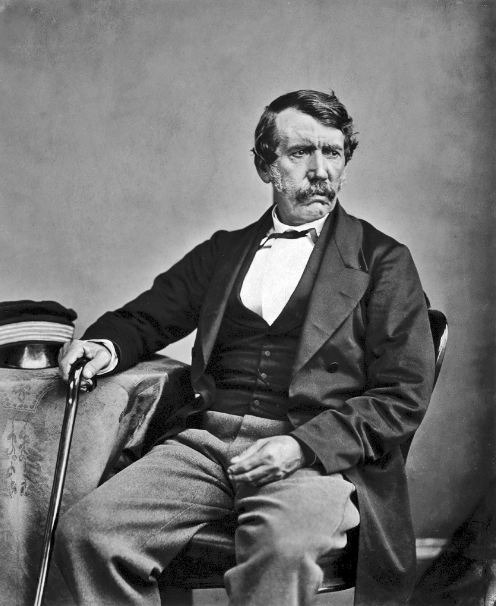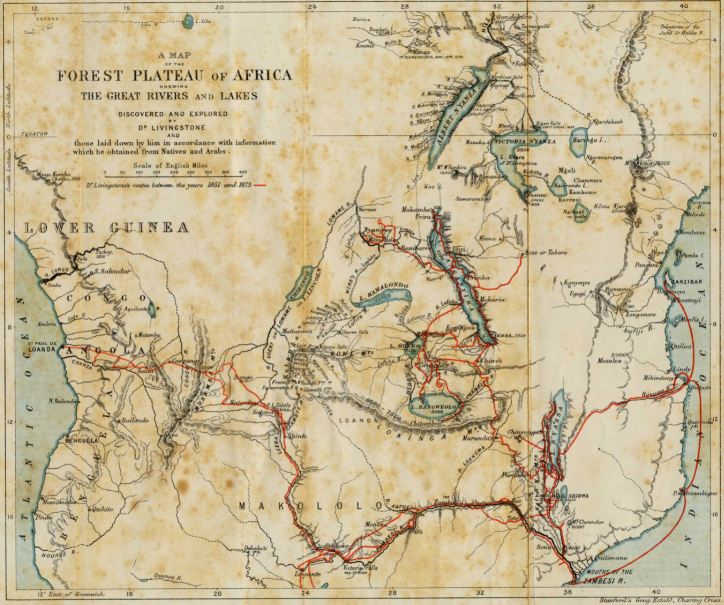David Livingstone is a Scottish physician, missionary, and explorer, who played the most significant role in discovering and mapping the “Dark Continent,” Africa. His expeditions from east to west unfurled the land’s interior and uncharted waters, all while spending effort to reach and evangelize the native people and free them from the treacherous slave trade. Here, let’s discover more about David Livingstone, his explorations, and his lasting legacy in Africa.
Early Life
Born on March 19, 1813, in Blantyre in Scotland, Livingstone grew up in a relatively poor family, reared in a single tenement room allotted for the workers of a cotton factory in Clyde. At age 10, he began working at the cotton mill to help his family. Following his long work, he studied from eight to ten o’clock in the evening and during the weekend, perhaps a glimpse of his rarity and utmost dedication.
In 1834, Livingstone decided to be a missionary after reading a pamphlet containing an appeal from British and American churches, looking for qualified and trained missionaries to be sent to China. At age 23, he entered Andersonian University in Glasgow to begin his medical studies and was accepted by the London Missionary Society.
His initial hopes to be sent to China were crushed as the first Opium war commenced. Yet, after meeting Robert Moffat, a Scotting missionary in South Africa, and hearing his experiences, Livingstone was convinced to take Africa instead as his area of service. After earning his ordination certification on November 20, 1840, Livingstone finally set sail to Africa the following month, reaching Cape Town, Africa, on March 14, 1841 – the continent where he would devote the rest of his life.
Explorations of Africa
Livingstone spent the following months visiting mission stations, learning more about the native language and life, teaching, preaching, offering his medical services, and his other tasks as a missionary. Yet, his visit to Kuruman on July 31, 1841, Moffat’s settlement, became somewhat a disappointment as the number of converts became dismal. It led to Livingstone’s decision to travel instead rather than spending too much time on one settlement but only converting a few natives.
With his pursuit to spread the Gospel and find more converts, Livingstone pushed northward. He had already reached farther than any other European missionary had in the challenging Kalahari country by 1842.
Livingstone married Mary Moffat on January 2, 1845. She joined Livingstone on many of his journeys before returning to Britain in 1852 and their four children.
From 1849 to 1856, Livingstone’s expedition allowed him to traverse the Kalahari Desert. He then reached Lake Ngami in 1849 and the Zambezi River in 1851. With his safe already in Scotland in 1852, there was nothing to hold back Livingstone to further advance “Christianity, commerce, and civilization” in Africa.
Starting in Linyanti in 1853, Livingstone walked west and arrived in Luanda on May 31, 1854, after a tough journey. On September 20, 1854, he began the return journey to bring his Makololo followers back home and reached Linyanti in Botswana on September 11, 1855. It was another arduous trip, as rain, flooded rivers, sickness, and hostile tribes marred their way.
On November 3, 1855, Livingstone embarked on a new journey, this time going eastward. In this exploration, Livingstone discovered the thundering, spectacular waterfall, which he dubbed as “Victoria Falls,” after his queen. On May 20, 1856, Livingstone reached the mouth of the Zambezi River on the Indian Ocean in present-day Mozambique, making him the first European explorer to traverse the continent from west to east.
After waiting for a ship for six months, Livingstone returned to England as a national hero on December 9, 1856. The following year, he published “Missionary Travels and Researches in South Africa,” his best-selling book that also set records in publishing history. In March 1858, he went back for another exploration in central and easter Africa upon the order of British authorities.
Yet, the expedition didn’t fare well as he faced many difficulties. His wife also died on the Zambezi in April 1862 due to Malaria. Unimpressed with the results of exploration, Livingstone was ordered home by the British government in 1864.
Two years later, Livingstone was back in Africa in 1866 after securing support from the private sector. This time, his expedition centered on finding the source of the Nile river, along with his usual aim of spreading the Gospel and abolishing the slave trade. The expedition lasted until Livingstone’s death.
In May 1873, Livingstone was found dead in his tent kneeling beside his bed, as if he was praying. His heart and internal organs were removed to embalm the body and buried in the African soil. His loyal men carried his body to the coast and arrived in February 1874 after a nine-month ordeal. Livingstone’s body was taken back to England and was buried on April 18, 1874, in Westminster Abbey.
Livingstone’s Legacy
Livingstone changed history as he mapped out many areas of the uncharted continent, shared many significant scientific observations, and made many geographical discoveries that unveiled Africa to the entire world. In the process, he also brought Christianity to the lost, inspired many communities, and exposed the horrors of Africa’s former slave trade, making him arguably the most influential missionary to ever live.


